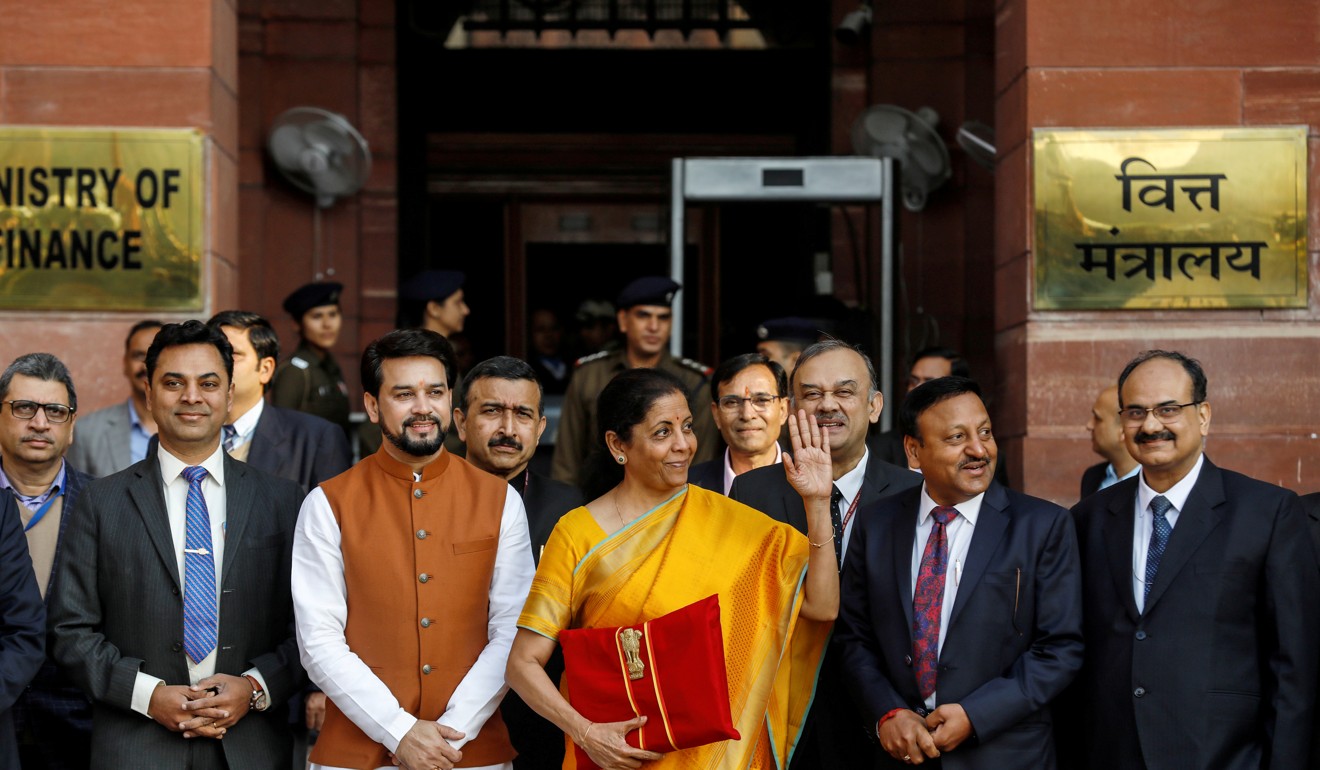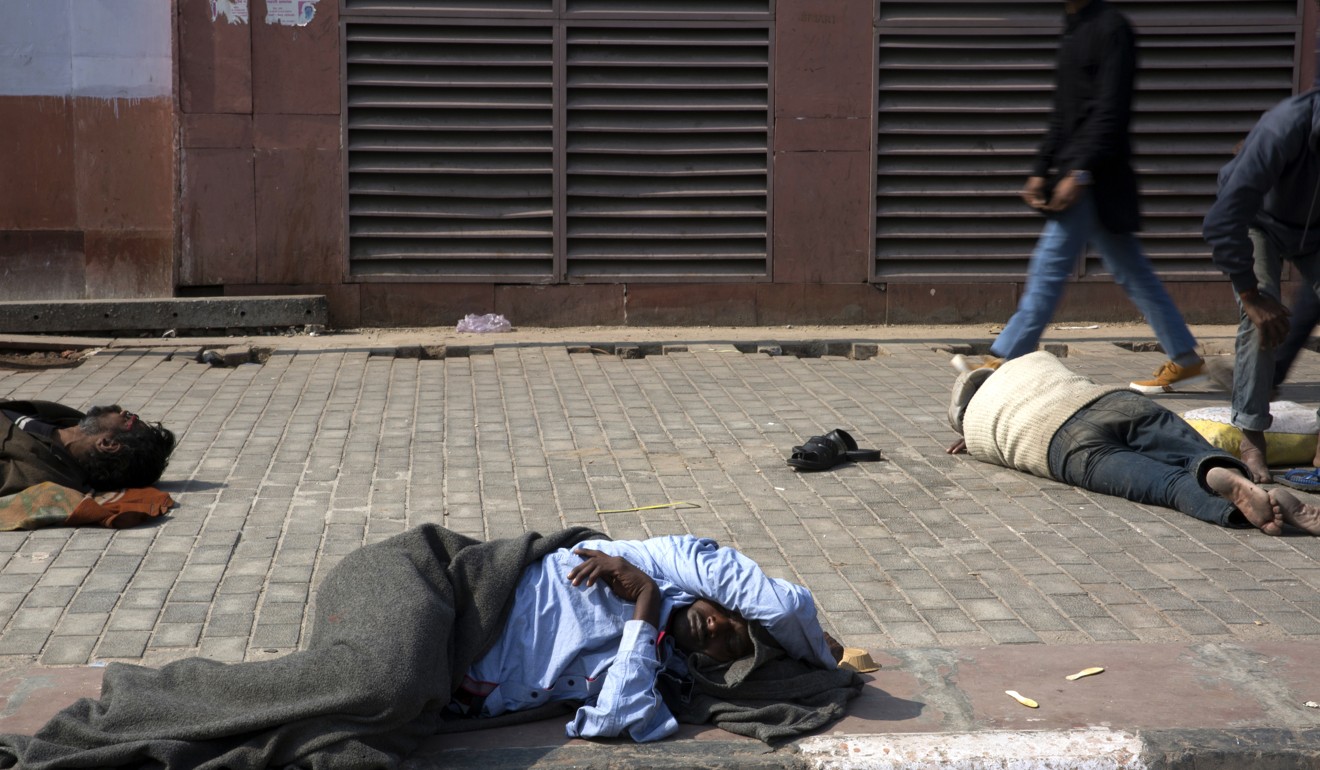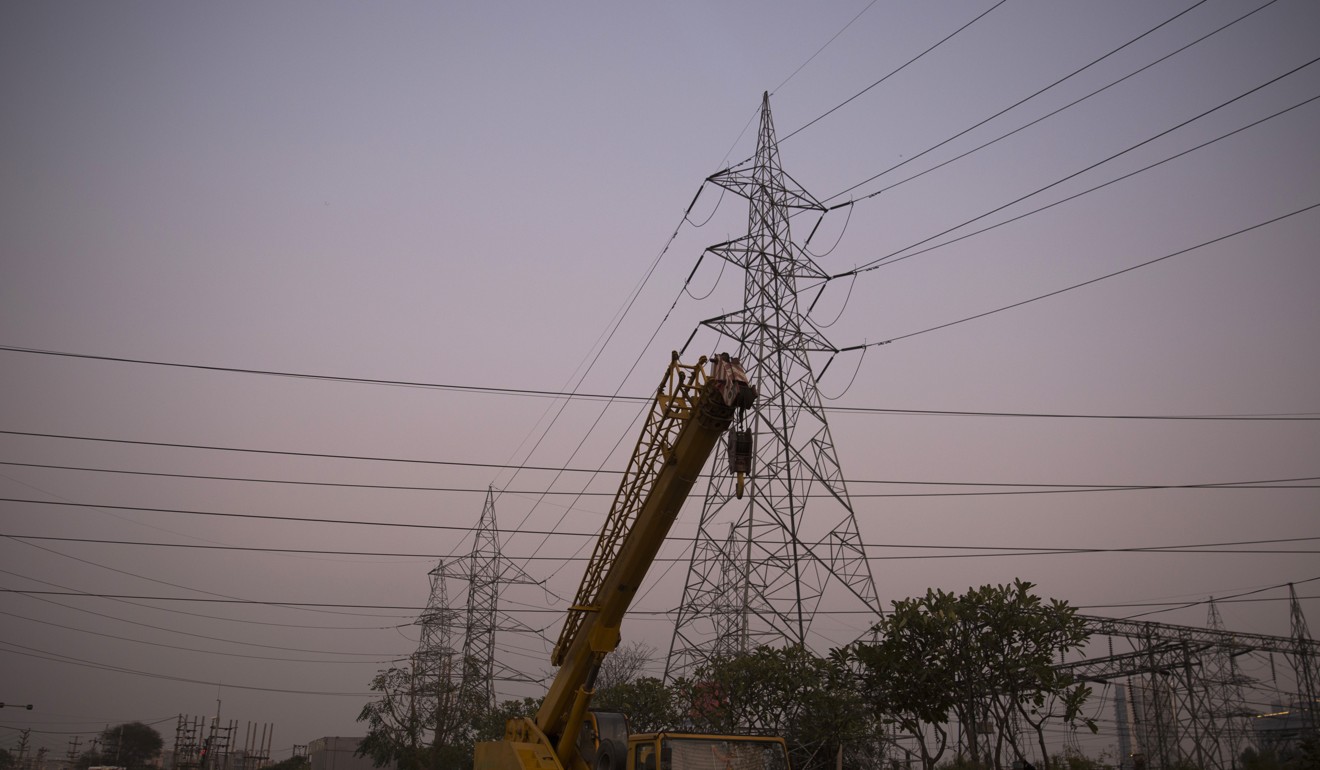
How Modi’s budget failed India’s poorest and most vulnerable
- The budget was eagerly awaited amid the country’s economic doldrums, with GDP growth at an 11-year low and unemployment at a 45-year high
- But experts say cuts to rural food and jobs programmes risk harming the people who rely on them.

All the women of Tongabad village hear are stories of despair. After all, in Amravati district, in the western Indian state of Maharashtra, they live in the constant shadow of death – each day, on average, three farmers kill themselves amid failing crops, poor rainfall and very low pay leading to insurmountable debts.
But this has not deterred the women of Tongabad. Since 2016, led by Meena Sondarkar, they have organised themselves and demanded employment under a state-sponsored scheme, the Mahatma Gandhi National Rural Employment Guarantee Act. The scheme promises 100 days of work each year for people who are asked to work on government projects, such as constructing semi-paved roads, planting trees or building small water-storage facilities.
“This pays us 206 rupees [US$2.90] a day, more than double what we get on the farm. More importantly, unlike farming, we don’t have to incur debts here to earn money,” said Sondarkar, 35.
At a time when India’s economy is in a pronounced slowdown – GDP growth has fallen to an 11-year low of under 5 per cent, unemployment is at a 45-year high and consumer spending has declined for the first time in four decades – the jobs programme was a reliable source of succour for women like Sondarkar.
But when India’s finance minister Nirmala Sitharaman presented the country’s budget on February 1, it contained cuts of more than 12 per cent to the programme’s funding – jeopardising many people’s chances of finding employment. “A cut in funds will translate into fewer days of employment and fewer people getting these jobs. How will rural populations then find the money to spend and spur economic growth?” asked Rahul Bais, founder of Swarajya Mitra, a not-for-profit that works in Amravati on issues of education and women’s empowerment.
The women of Tongabad were not the only ones feeling let down by India’s budget. Many are now calling the document an opportunity wasted by Prime Minister Narendra Modi’s government.

The budget, the first in Modi’s second term as premier, was eagerly awaited – businesses hoped for a stimulus to dispel the economic gloom, citizens expected tax breaks that would allow them to spur spending, and the growing pool of unemployed sought more jobs.
But by the time Sitharaman finished reading her 2 hour, 40 minute budget speech, the longest in the history of independent India, all were left dejected. The markets crashed, unemployment found little mention and taxpayers got concessions with strings attached.
To be sure, there were enough indications that the budget would be a tricky tightrope for the Modi government to walk. After a drop in income from tax collections and the failure of its planned sale of strategic assets, the government had little space for spending. Yet, the mounting economic crises – from a dip in manufacturing to low sales in key sectors like automobiles and consumer goods, as well as the credit crunch that resulted in investment drying up – necessitated a strong call for action.
Many, like economist Dipa Sinha, are disappointed exactly because of the gravity of the situation. “At one level, it is a bit confusing because one does not understand how, in this situation, the budget is so visionless. The document seems to be delusional and not wanting to accept the slowdown,” said Sinha, an assistant professor of economics at Dr BR Ambedkar University Delhi.
WEALTH CREATION, NOT JOB CREATION
Sitharaman’s budget – as well as the country’s annual economic survey, typically released on the eve of the budget – stressed the importance of “wealth creation”. The survey went further, offering broad approaches to ensuring such wealth creation, from encouraging grass roots entrepreneurship to pushing for greater privatisation and pro-business policies.
“India’s aspiration to become a US$5 trillion economy depends critically on promoting pro-business policies that provide equal opportunities for new entrants,” the economic survey said.
This, Sinha said, was problematic on two counts. “At a time when unemployment is at its peak, the emphasis must be on job creation, instead of it being purely on wealth creation and being openly pro-business.

“In addition, this feels like it harks back to the principle of trickle-down economics at a time when it is now commonly understood that this has only increased inequality,” she said, referencing the economic concept that encourages greater incentives for big businesses and the wealthy, with the assumption that its benefits will be experienced by all sectors of society once wealth “trickles down”.
Sinha’s point on income inequalities is backed up by data. Days before the budget, global rights group Oxfam released data showing India’s richest 1 per cent held more than four times the wealth of the bottom 70 per cent of its population – while the combined wealth of its 63 billionaires surpassed the country’s 2018-19 budget.
THE RURAL ECLIPSED
This lack of focus on the country’s unequal growth has made leaders like Ramandeep Singh Mann, a farm activist organising farmers in the northern state of Punjab, believe the budget has little in it for farmers. Agriculture and affiliated activities continue to be a source of livelihood for 70 per cent of India’s rural population. And yet, Mann said, the sector was neglected.
Last year, on the eve of the country’s national elections, the Modi administration announced a cash transfer scheme in which small-scale farmers would get 6,000 rupees (US$83) a year, in three instalments. “But the budget documents showed that the scheme was implemented very poorly and not all farmers received benefits. When there is a slowdown and a dip in consumer spending, the easiest way to deal with it is to put money into people’s hands. That’s exactly what the government is not doing here,” he said.
According to Mann, the rural unemployment crisis is unravelling rapidly, without getting any attention from the government. “Earlier, when farming failed, many from the rural areas would migrate to the urban areas and pick up jobs which would allow them to save money and send it back home. But now, this unemployment crisis in the country has meant that there are no jobs in the urban areas to fall back on anymore,” he said.

The government has also cut subsidies for the Indian National Food Security Programme, the world’s largest public distribution system, which offers essential foods such as rice, wheat and sugar at subsidised prices to 800 million people. Last week’s budget sought to slash the subsidy by the government by almost 40 per cent – which Mann and economist Sinha said would weaken the system and hurt the poorest and most vulnerable.
The budget did, however, present a 16-point formula for the agriculture sector, from increasing the flow of agricultural credit to better farm linkages and connectivity for perishable items. “On paper, these look fine. But this government’s track record on fulfilling its promises does not inspire confidence in many farmers,” Mann said.
INFRASTRUCTURE PRIORITISED
One aspect of the budget that did draw positive headlines was its emphasis on infrastructure creation. The Modi government, in an implicit acknowledgement of the domestic investment crunch, has sought to incentivise foreign investment in Indian infrastructure by exempting sovereign funds from paying taxes for the next four years.
Rahul Mody, managing director and infrastructure head at Ambit Corporate Finance, hailed the move as one that would help draw in investment. The government last year announced a US$1.4 trillion investment plan in the country’s infrastructure sector over the next five years, from projects in the energy sector to road construction as well as railways.
Mody believes this plan will now gather momentum. “Given that these sovereign funds are long-term, patient investors, they are seen as the right profile of investors for these kinds of projects. This move will basically send out a message that India wants long-term capital. The India infrastructure story is here to continue, over the next decade or two.” ■